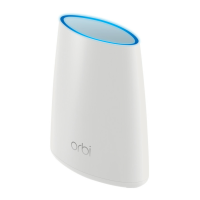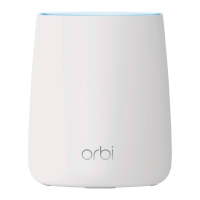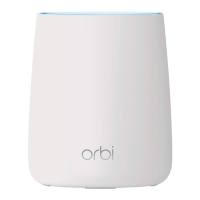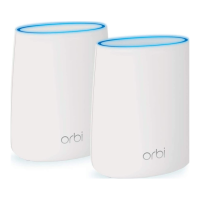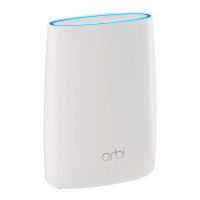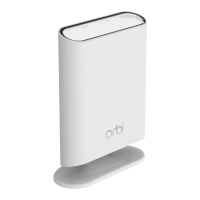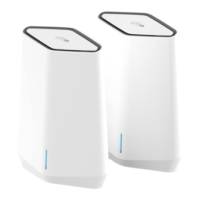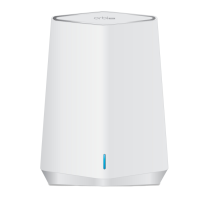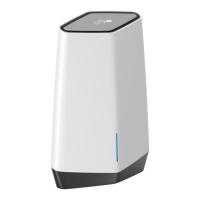Supplemental Information
124
Orbi High-Performance AC3000 Tri-band WiFi System
Technical Specifications
Table 5. Router specifications
Feature Description
Data and routing protocols TCP/IP, RIP-1, RIP-2, DHCP, PPPoE, PPTP, Bigpond, Dynamic DNS, UPnP,
and SMB
Power adapter • North America:
120V, 60 Hz, input
• UK,
Australia: 240V, 50 Hz, input
• Europe: 230V
, 50 Hz, input
• All regions (output): 12V/3.5A DC output
Dimensions 6.7 x 3.1 x 8.89 in (170.3 x 78.9 x 225.8 mm) each
Weight 1.96 lb (890.5g) each
Operating temperature 0° to 40° C (32º to 104º F)
Operating humidity 90% maximum relative humidity, noncondensing
Electromagnetic emissions FCC Part 15 Class B
VCCI Class B
EN 55 022 (CISPR 22), Class B C-Tick N10947
LAN 10BASE-T or 100BASE-TX or 1000BASE-T, RJ-45
WAN 10BASE-T or 100BASE-TX or 1000BASE-T, RJ-45
WiFi Maximum wireless signal rate complies with the IEEE 802.11 standard.
1
1. Maximum wireless signal rate derived from IEEE Standard 802.11 specifications. Actual throughput can vary. Network
conditions and environmental factors, including volume of network traffic, building materials and construction, and network
overhead, lower actual data throughput rate.
Radio data rates 2.4 GHz: Max 400 Mbps
5 GHz Front haul: Max 866 Mbps
5 GHz Back haul: Max 1733 Mbps
Data encoding standards IEEE® 802.11b/g/n 2.4 GHz–256 QAM support
IEEE® 802.11b/n/ac 5 GHz–256 QAM support
Maximum computers per
wireless network
Limited by the amount of WiFi network traffic generated by each node (typically
50–70 nodes).
2.4 GHz: 127
5 GHz (front haul): 127
Operating frequency range 2.4 GHz: 2.412–2.462 GHz (US)
2.412–2.472 GHz (Japan)
2.412–2.472 GHz (Europe ETSI)
5 GHz: 5.18 GHz–5.24 GHz and 5.745 GHz–5.825 GHz (US)
5.18 GHz–5.24 GHz and 5.5 GHz–5.7 GHz (Europe, Japan)
5.26 GHz–5.32 GHz (Europe, Japan, to be supported in later firmware.)
802.11 security WPA2-PSK, WPA, and WPA2

